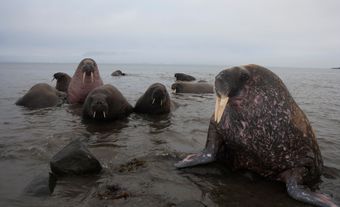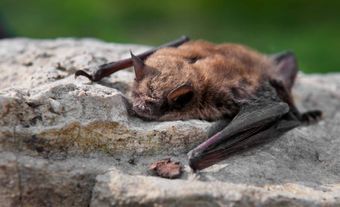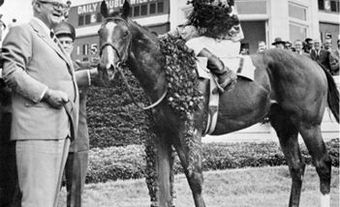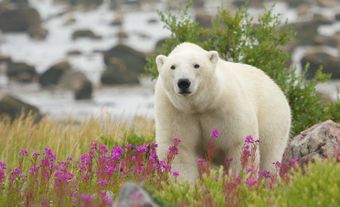The pronghorn (Antilocapra americana) is a small, very fleet ungulate of the order Artiodactyla. It is the last surviving species of a once abundant and diverse North American family of ruminants, known as Antilocapridae. Although sometimes called pronghorn antelope, it is not a true antelope.

Description
Like other plains ungulates, pronghorns have strongly patterned coats. Males and females are similar in size and appearance. The most prominent difference between the sexes is horn size, with males having notably larger horns. When bucks shed their horn sheaths after the mating season, they assume female form and become difficult for predators to detect. Horn growth is highly unusual in that the horns are shed annually after the rut (mating season) and then recommence growth, but from the tip of the furred horn sheaths, growing down as well as up. The loss of the horn sheath is also unusual; in other bovids, the sheath is permanent. In the mating season, bucks are territorial in some populations and defend a harem of females in others. Their life strategy is reminiscent of that of the Siberian roe deer.
Distribution
In 1900, they were near extinction, but the conservation and management of pronghorns has been successful. Rigorous protection and reintroduction have made them common in the Western US. Southwestern Saskatchewan and Southeastern Alberta are the northern fringe of the pronghorns' distribution.
Pronghorns move together and readily travel hundreds of kilometres to avoid bad winter conditions or vacate burnt-over areas.

Reproduction
Pronghorns have a very high reproductive rate (twins are the rule), which permits rapid restoration of losses from catastrophic kills by blizzards, drowning or fire. Reproduction is unique in that 5-7 embryos implant in the female's uterus after the rut. There follows a competition among the embryos, of which only two survive, each in its own uterine horn.
Evolution
The species reflects the harsh competition from the predators that American ungulates evolved alongside. The extinct American cheetah probably helped shape the pronghorn, as did the erratic prairie environment with grass fires, blizzards, droughts and floods. These factors resulted in a highly social, short-lived species with prominent, wide-set eyes and a large brain indicative of adaptability and learning.

 Share on Facebook
Share on Facebook Share on X
Share on X Share by Email
Share by Email Share on Google Classroom
Share on Google Classroom





